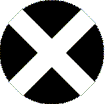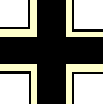Spain


Capitán Javier Murcia Rubio
Spain


Capitán Javier Murcia Rubio
The all-Spanish Fiat Grupo, with the designation 2-G-3, was formed in Cordoba on 4 May 1937 from the escuadrillas led by capitán Joaquín García Morato and capitán Ángel Salas (2-E-3). Morato assumed command of the Grupo, and Julio Salvador took over leadership of Morato’s old escuadrilla (1-E-3).
This had been made possible after a further consignment of eight CR.32s had been passed on to the Nationalist air force in April 1937, and they joined the five previously handed over four months earlier to form the basis of the first Spanish grupo equipped with Fiat fighters. Grupo 2-G-3 consisted of 13 aircraft and 15 pilots, which were divided into two escuadrillas of six fighters each. The final CR.32 was Morato’s personal (3-51).
Of the pilots assigned to its escuadrillas, two of them had previously served as wingmen in the Patrulla Azul, while the remaining 12 were chosen according to their experience in fighters.
Escuadrilla 1-E-3
Teniente Julio Salvador (CO)
Teniente Miguel Guerrero García
Alférez Manuel Vázquez Sagastizábal
Alférez Arístides García López Rengel
Alférez Rafael Mazarredo Trenor
Alférez Jesús Rubio Paz
Brigada Ramón Senra ÀlvarezEscuadrilla 2-E-3
Capitán Ángel Salas
Capitán Narciso Bermúdes de Castro
Capitán Murcia
Teniente Miguel García Pardo
Alférez Javier Allende Isasi
Alférez Joaquín Ansaldo Vejarano
Alférez Jorge Muntadas Claramunt
Grupo 3-G-3 was established in the end of December 1937, with comandante José Ibarra Montis as its CO. The unit was comprised of Escuadrillas 3-E-3 and 4-E-3, led by capitanes Murcia and Manrique Montero Mera, respectively.
During the morning on 30 December, 15 CR.32s from Grupo 2-G-3 and three from Escuadrilla 3-E-3 (the latter undertaking its first combat mission) took off from Alfamén and intercepted 17 I-16s from Escuadrillas 5a and 6a of Grupo No 21. Two Ratas were credited to capitán Murcia (3-E-3) and alférez Arístides García López (1-E-3), the latter also subsequently claiming a ‘Martin bomber’ destroyed. Leitenant Aleksandr Mikhailovich Sumarev of 6a/21 was indeed killed in action, and two of his comrades returned to base wounded. All seven surviving I-16s from 6a/21 had suffered combat damage.
It's possible that Konstantin Dobronitskiy from 5a/21 took part in this combat. Some sources claim that his I-16 CM-132 was damaged in combat with CR.32s while other claim that his I-16 was hit by AAA fire. On trying to land it seems that he hit a tree (or wall) and he suffered a severe head trauma.
Eight CR.32s from 2-G-3 and six from 3-G-3 took off in the morning on 31 May. Their task was to escort a number of Ju 52/3ms and Ro.37s over the La Puebla de Valverde sector.
On arrival, they encountered 22 Chatos and 22 Ratas. A 90-minute clash began immediately but the Nationalist crews were successful in protecting the bombers, which, their task completed, made good their escape.
Eight I-15s and two I-16s were claimed shot down without losses. The successful pilots were teniente de Hemricourt (2-E-3) (I-15), teniente Julio Salvador (CO 1-E-3) (three I-15s and one I-16), teniente Rafael Simón García (2-G-3) (I-15), teniente Manuel Vázquez Sagastizábal (1-E-3) (I-15), capitán Murcia (3-E-3) (two I-15s) and Muerza (I-16).
Teniente Salvador’s first I-15 was seen falling close to La Puebla, the pilot of the second escaped by parachute into Republican territory and the third, flown by teniente Juan Sayós Estivill of 1a Escuadrilla, made an emergency landing at the Republican airfield of Sarrión with a damaged engine. Estivill quickly abandoned his fighter, which was strafed by Salvador until it caught fire and burnt out. A few minutes later the Spanish ace destroyed an I-16. Teniente de Hemricourt shot down another I-15 near La Puebla, the Belgian watching his opponent take to his parachute and land in the Republican zone.
During this combat, capitán Ángel Salas was attacking a Chato when three enemy fighters in turn attacked him. His Fiat was hit several times before he managed to break away from the attack, but his machine was vibrating so badly that he had to return to base.
Bf 109s escorting Legion Condor bombers also engaged some of the I-16s.
The Republican bulletin issued the following day acknowledged the loss of five aeroplanes that crashed within its own lines, with four wounded pilots and one uninjured. The Polikarpov units had claimed the destruction of 12 Italian and German aircraft in return, although not a single Nationalist aircraft had actually been lost in combat. The Escuadra de Caza No 11 claimed ten CR.32s and it seems that Vladimir Bobrov of the 1a/21 (I-16) claimed one of the CR.32s.
In the end of June 1938, Joaquín García Morato assumed command of the second Fiat group (3-G-3).
Pilots in Escuadrilla 3-E-3 (later 5-E-3) were:
Capitán Murcia (CO)
Ignacio Alfaro Arregui
G. Queipo de Llano Martí
Andrés Robles Cebrián
Joaquín Chapaprieta Inglada
Alfonso Rubial
García de Juan
Pilots in Escuadrilla 4-E-3 (later 7-E-3) were:
Capitán Heraclio Gautier Larrainzar (CO)
Teniente Joaquín Velasco Fernández Nespral
Teniente Emelio O’Connor Valdivielso
Acuña
Fernando Arrechea Belzunce
Enrique Munaiz de Brea
Alférez Alonso Fariña
Pilots in the Escuadrilla 6-E-3 were:
Capitán Jose Barranco del Egido (CO)
Teniente José Larios y Fernández Villavicencio
Muerza
José Andrés Lacour Macia
R. Bartolomé Chávarri
Kindelán
Carracido
P. Téllez Rivas
Murcia ended the Spanish Civil War with 5 biplane victories.
During the Second World War, Murcia served as CO of last Spanish Group 15. (Span.)/JG 51 between January and April 1944. During his time in Russia, he didn’t claim any additional victories.
Murcia ended the war with 5 biplane victories.
Claims:
| Kill no. | Date | Time | Number | Type | Result | Plane type | Serial no. | Locality | Unit |
| 1937 | |||||||||
| 1 | 30/12/37 | morning | 1 | I-16 (a) | Destroyed | CR.32 | Teruel area | 3-E-3 | |
| 1938 | |||||||||
| ? | 31/05/38 | morning | 1 | I-15 (b) | Destroyed | CR.32 | La Puebla de Valverde area | 3-E-3 | |
| ? | 31/05/38 | morning | 1 | I-15 (b) | Destroyed | CR.32 | La Puebla de Valverde area | 3-E-3 |
Biplane victories: 5 destroyed.
TOTAL: 5 destroyed.
(a) Claimed in combat with 5a/21 and 6a/21, which lost 1 I-16 and 7 damaged. 2-G-3 and 3-E-3 claimed 2 I-16s and 1 SB.
(b) 2-G-3 and 3-G-3 claimed 8 I-15s and 2 I-16 without losses. The Legion Condor didn’t claim nor lost anything. The Republicans claimed 12 Italian and German aircraft for the loss of 5 aircraft (4 wounded pilots).
Sources:
Air War over Spain - Jesus Salas Larrazabal, 1974 Ian Allan Ltd, Shepperton, Surrey, ISBN 0-7110-0521-4
Fiat CR.32 Aces of the Spanish Civil War - Alfredo Logoluso, 2010 Osprey Publishing, Oxford, ISBN 978-1-84603-983-6
Additional information kindly provided by Alfredo Logoluso and Ondrej Repka.


